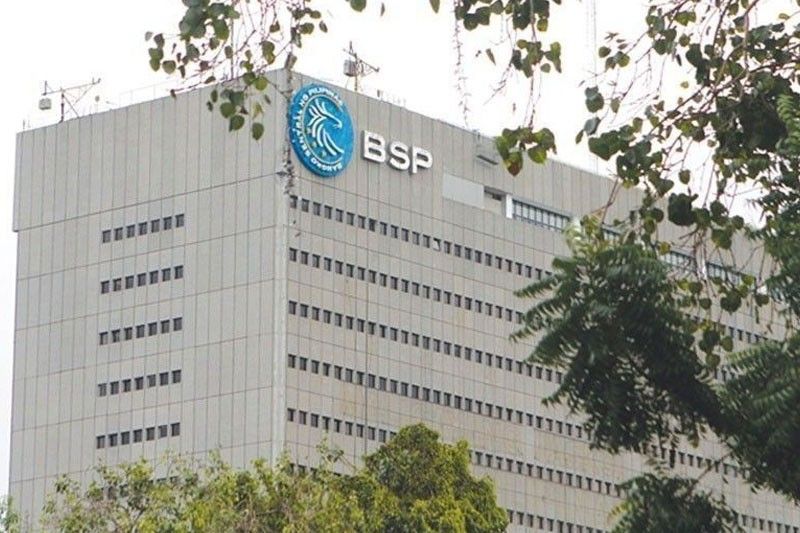BSP sees narrower BOP, current account deficits

MANILA, Philippines — The twin balance of payments (BOP) and current account (CA) deficits will likely moderate over the next two years to reflect the slightly weaker global growth prospects, according to the Bangko Sentral ng Pilipinas (BSP).
In an online press briefing, BSP director Sittie Hannisha Butocan said monetary authorities cut their BOP shortfall forecast to $1.2 billion (0.3 percent of gross domestic product) for this year from the original target of $1.6 billion (0.4 percent of GDP).
For next year, Butocan said the projected BOP deficit was maintained at $500 million or 0.1 percent of GDP.
The BOP is the difference in total values between payments into and out of the country over a period. A deficit means more dollars flowed out of the country to pay for the importation of more goods, services and capital than what came in from exports, remittances from overseas Filipino workers (OFWs), business process outsourcing (BPO) earnings and tourism receipts.
“The updated set of 2023-2024 BOP forecasts reflects mainly the slightly weaker global growth outlook, particularly for this year, which has been compounded by heightened external risk factors,” Butocan said.
She said the BSP also lowered its CA deficit target for 2023 to $15.1 billion (3.4 percent of GDP) from the previous forecast of $17.1 billion (four percent of GDP) and $15.4 billion (3.2 percent of GDP) for 2024 from the original target of $16.8 billion (3.4 percent of GDP).
“The overall BOP position is seen to post lower deficit levels for 2023 and 2024 than earlier anticipated, given revisions made on the forecasts for both the financial account and current account. The current account gap is seen to narrow as goods exports and imports are expected to moderate amid weak demand and decline in commodity prices,” she said.
The BSP, she said, approved the lowering of the projected growth on merchandise exports to one percent from three percent and imports to two percent from four percent for this year.
The growth target for merchandise exports was retained at six percent and imports at eight percent for 2024.
Likewise, growth targets for services exports was kept at 17 percent for this year and 16 percent for next year while that of services imports was maintained at 11 percent and 10 percent, respectively.
“Despite the optimism attached to the reopening of China’s economy, such view remains tentative given its numerous domestic challenges, among which is declining property sales and real estate investment. Furthermore, weak external demand is likely to continue as uncertainties have been amplified by overseas financial system woes in recent months,” Butocan said.
While some upside risks have been identified, particularly that of China’s economic reopening, the BSP believes the unwinding of supply-side disruptions, and decelerating inflation, downside risks will continue to dominate the global and trade outlook particularly in the near term.
“These developments continue to weigh on the trade and investment prospects in emerging market economies, including the Philippines. Even as the domestic economy sustained its robust recovery from the pandemic, the spillover effects from the global economic slowdown can be a major drag,” she said.
Nonetheless, prospects for BPO and tourism industries remain positive, alongside stable remittance inflows from OFWs, providing support to the CA.
Butocan said the BSP sees BPO revenues growing by nine percent for this year and next year amid shift to higher value added services, while tourism receipts may rise by 80 percent for 2023 and 50 percent for 2024 following further recovery in international flight frequencies.
Multilateral lender International Monetary Fund said global economic activity and trade may rise by three percent and 3.5 percent in 2024, respectively, both higher than the 2023 targets.
The projected increase of OFW remittances was retained at three percent for both 2023 and 2024.
Redentor Paolo Alegre, officer-in-charge of Monetary Policy Sub-Sector at the BSP, reported that the CA deficit widened slightly to $4.3 billion or 4.3 percent of GDP in the first quarter from a year-ago level of $4 billion or 4.2 percent of GDP.
“This was due mainly to the widening trade in goods deficit and lower net receipts in the primary income account. This was partly muted by the increase in net receipts in the trade in services account,” he said.
On the other hand, Alegre said the country booked a BOP surplus of $3.5 billion during the three-month period, higher than the $495 million recorded in the first quarter of last year due to higher net inflows or net borrowing by residents from the rest of the world in the financial account.
He said the country’s gross international reserves (GIR) declined by 5.4 percent to $101.5 billion in end-March from $107.3 billion a year ago. The GIR may hit $100 billion this year and $102 billion next year.
- Latest
- Trending




























